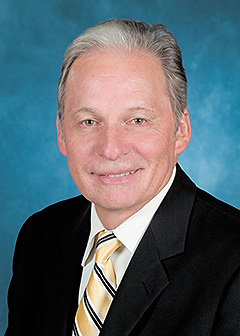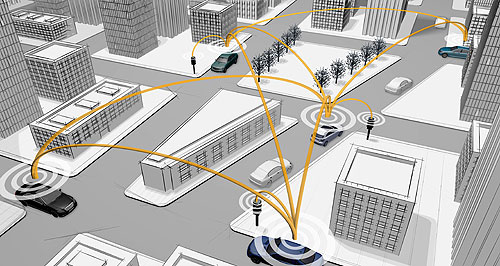Make / Model Search
News - General News - RegulationFight to save V2X radio for road safetyOff beam: Vehicle communications could be the next big thing in road safety – but only if lawmakers keep their hands off the necessary radio bandwidth. ‘Huge’ road safety breakthrough threat as US considers radio spectrum auction19 Sep 2013 AMERICAN road safety organisations and the motor industry have been forced to defend the preservation of radio bandwidth vital to a new generation of motor vehicle anti-collision technologies to be rolled out in life-saving vehicle-to-vehicle and vehicle-to-infrastructure communications systems. The dispute could have global implications for the fight against the road toll if the US Federal Communications Commission (FCC) releases the 5.9gHz wireless bandwidth for other purposes, perhaps even to uncontrolled radio users. US Intelligent Transport System (ITS) chairman and director of the University of Michigan Transport Research Institute Dr Peter Sweatman said today that although the radio spectrum had been put aside 10 years ago for the new “V2X” anti-collision and traffic flow control technology, the FCC had this year called for submissions on how the bandwidth might be used for other purposes. He said the loss of the radio spectrum could have severe implications for the new technologies that the US National Highway and Traffic Safety Administration had estimated could cut unimpaired road crash injuries and deaths by up to 80 per cent. In Australia to speak at the 2013 Australian ITS Summit in Sydney this week, Dr Sweatman told GoAuto that a large number of worried American organisations had made submissions to the FCC in defence of the preservation of the radio spectrum for road safety technologies that include devices allowing vehicles to “talk” with one another to avoid collisions, while also communicating with roadside infrastructure to enhance safety. He said the FCC was now considering the submissions and had yet to announce a decision on the future of the 5.9gHz spectrum.  Left: Peter Sweatman. Left: Peter Sweatman.“From our point of view, it would make no sense at all, after all this research, particularly when we are now at the point in Ann Arbor (Michigan) where we have a pilot deployment of 3000 vehicles operating very successfully, that you would suddenly auction it (the radio bandwidth) off,” he said. “Nobody knows what the impact of unlicensed users in that bandwidth would be. “We don’t even know what kind of uses might come up. So, it is not even possible to test it properly to prove there would be interference. “We have made a pretty strong case that 5.9gHz spectrum should maintained for this safety scheme.” Dr Sweatman said he hoped the FCC would see the sense of maintaining the bandwidth that had the potential to make a “huge” contribution to road safety, not just in the US but globally. He said any destabilisation of the safety radio spectrum in any region of the world would be a concern. “I guess what we have learned in America is that we need to be very vigilant and we need to show that we are using the spectrums,” he said. “The ability to move forward quickly with research model deployment is critical. We have had the benefit of this spectrum for more than 10 years, and we have just got to the point of a large model deployment. You can’t afford to hang around, I don’t think.” Originally from Melbourne, Dr Sweatman is involved with the team running the world’s largest trial of V2X technologies in Ann Arbor. So far, the successful trial has resulted in a database of more than nine billion basic safety messages that have been passed on to the US Department of Transport. Dr Sweatman said he was unaware of any threat to Australia’s preserved radio spectrum for such technologies, but said he had been told that Europe’s wireless spectrum was facing similar dangers to those in the US. “We have got a global automotive industry, with global manufacturers and suppliers, so it makes perfect sense (to have preserved radio spectrum in each region),” he said. “Maybe it is too much to expect that all the V2X systems will be identical, but they need to be very, very similar. “I think we are heading in that direction right now, and that’s a good thing.” Dr Sweatman said he wanted to see a much larger roll-out of V2X technologies, with up to 30,000 vehicles – 10 times the fleet of the current trial – equipped with the devices that can, for example, warn the drivers of cars approaching an intersection if there is potential for a collision. He said the southeast corner of Michigan was ideal for such a roll-out, which he and others involved in the Ann Arbor trial believed would be off sufficient scale to cut road fatalities and injuries. Dr Sweatman said that while such vehicle communications systems could provide a wide range benefits, including improved traffic flow, the US trials so far are been focused on road safety. He said he was not sure that such systems would ever become mandatory in the US, but he believed the benefits would become so desirable to vehicle owners that they would want the technology including in their car, truck or other vehicle anyway. Dr Sweatman, who grew up and in Melbourne and once worked for the Australian Road Research Board, said he was particular interested in the development of aftermarket V2X units that would offer owners of existing vehicles the same benefits of this safety technology as next-generation cars, trucks and buses that are expected to be fitted with them as standard equipment by motor manufacturers.  Read more18th of September 2013  Safety question on vehicle-to-vehicle GPS systemsNSW tests show GPS not always accurate enough for new anti-crash technologies27th of August 2012  US, Germany launch V2X safety trialsLarge-scale trials to assess effectiveness of vehicle-to-vehicle communications tech |
Click to shareGeneral News articlesResearch General News Motor industry news |











Facebook Twitter Instagram